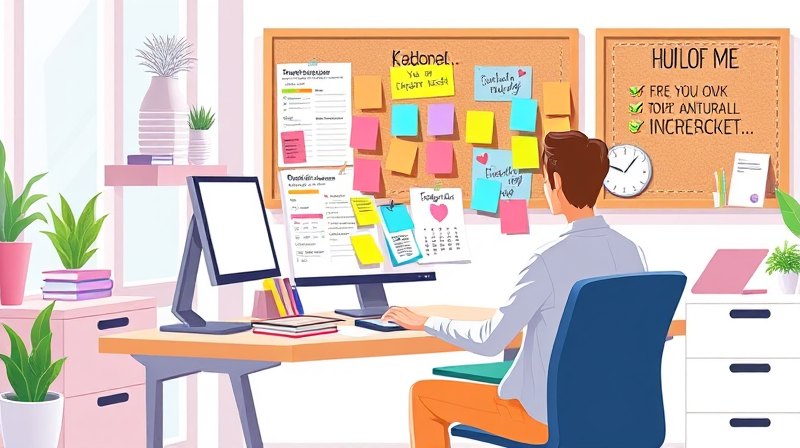In today’s dynamic business landscape, aligning your company’s practices with an organizational framework that reflects your unique habits is not just beneficial—it is essential for sustained success. An effective framework drives productivity, fosters teamwork, and creates an environment where individuals are motivated to innovate, learn, and adapt. The following insights and steps will help you construct a framework tailored to your organizational culture and habits so that every facet of your business works harmoniously towards achieving shared goals.
A customized framework is not a one-size-fits-all solution. Instead, it is a living system that evolves with your habits, values, and the pace of your business. By leveraging proven methodologies and adapting them for your specific context, you can unlock a path for alignment, accountability, and growth.
Understanding the Power of Habits in Organizations
At the heart of every successful organization lies a set of core habits that shape its culture and performance. This is reminiscent of Charles Duhigg's habit loop model that highlights the cue, routine, and reward structure inherent in any behavior. Recognizing these components within your team is key. When you understand how these habits function, you are better positioned to reinforce those that drive success and transform those that hold back progress.
Success begins with awareness. Start by identifying the everyday practices that contribute both to wins and challenges. Addressing these habits head-on can lead to remarkable improvements in engagement and efficiency.
- Identify positive habits: Trace what works well and promote their repeated use.
- Recognize unproductive patterns: Analyze underlying causes and work collaboratively to adjust them.
- Encourage reflection: Regularly assess the impact of these habits and refine them as necessary.
Understanding habits means you are not merely imposing a new system but rather sculpting a framework that integrates seamlessly with your current organizational culture.
A strong organizational culture rests on well-defined behaviors. By observing patterns and identifying opportunities for improvement, you can build an environment that adapts to changes and supports continuous growth.
Establishing and Tailoring a Framework to Match Your Culture
Begin this transformative journey with a comprehensive evaluation of your organizational habits and culture. The process starts with honest self-assessment. Recognize the existing behaviors in your team which can be further developed into a robust framework for success.
Step 1: Assess Your Current State
Launching the process with a thorough analysis using models such as COM-B (Capability, Opportunity, and Motivation) helps you pinpoint both the strengths and improvement areas in your current dynamic. This data serves as the foundation for establishing a system that is both relevant and effective.
Step 2: Define Core Values and Purpose
Every thriving organization is built on steadfast values and a clear sense of purpose. When your framework speaks directly to your team’s core beliefs, it becomes a true reflection of the company ethos. Reinforcing these values at every level ensures everyone is on board and committed to a unified goal.
Step 3: Establish Open Communication Channels
Communication is the lifeblood of any vibrant organization. Regular updates, clear reporting lines, and open forums where ideas are exchanged freely ensure that every member is engaged in the journey towards excellence. When transparency is prioritized, trust is built, paving the way for effective teamwork and problem-solving.
Step 4: Create a Rhythm of Accountability
A scheduled cadence of check-ins—from daily stand-up meetings to quarterly reviews—helps ensure that every task and responsibility is clearly defined and executed. This consistent rhythm keeps your team aligned with the overarching goals while enabling timely adjustments based on performance data.
Step 5: Embrace Continuous Learning and Data-Driven Decisions
To truly thrive, an organization must commit to ongoing improvement. Empower your team with regular training sessions, coaching programs, and opportunities for self-development. Using performance data not only provides insights into what’s working but also illuminates the areas needing refinement. This commitment to learning cultivates a forward-thinking and adaptable cultural framework.
Each step in this process contributes to a culture of growth, ensuring that your framework is flexible and responsive to both internal changes and external market forces. Remember that constructing a framework is a journey, not a destination.
As you implement these strategies, encourage your team to embrace change and view each new challenge as a stepping stone towards greater innovation. A tailored organizational framework is more than just a strategic instrument—it becomes an integral part of your company’s identity, uniting varied talents under a shared vision and purpose. In doing so, it drives performance and creates a nurturing environment where both individuals and the organization can flourish together.
By following these steps and continuously refining the approach based on feedback and performance metrics, you are laying the foundation for a resilient and adaptable organization. Focus on what truly makes your company unique, and let that drive every decision. Embrace this process with the understanding that incremental changes, when compounded over time, lead to transformative results that echo throughout the entire organization.
Embark on this journey with a mindset of patience and persistence. Your customized framework will not only sustain your organization through changing times but also inspire every team member to contribute their very best. The path to enduring success is built on the small, deliberate changes that create a lasting, positive impact.
Every day is an opportunity to build, adapt, and excel. Harness your organizational habits to construct a framework that elevates your company, ensuring that growth and innovation remain at the core of everything you do.








